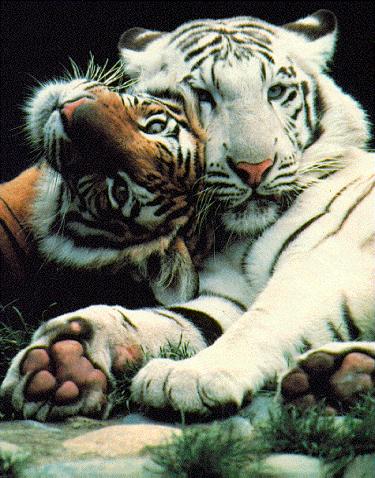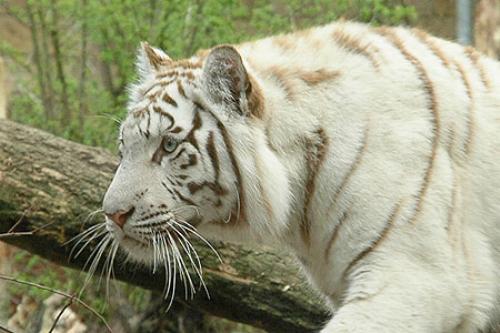
Relevant links:
- White tiger
More information about the white variant of the Bengal tiger.
The Bengal tiger
Panthera Tigris Tigris

The Bengal tiger or Royal Bengal tiger mainly lives in India, Nepal, Bhutan and Bangladesh.
Because of the many efforts by nature conservation organizations and the Indian government, the Bengal tiger is currently the most common subspecies. Currently there are about 4500 Bengal tigers left, most of them living in reserves established by the previously mentioned conservation organizations and the government.
Unfortunately, these reserves tend to become the victim of their own success; the number of Bengal tigers increased strongly, as a result the reserves are getting overcrowded and there is no space for young tigers to find their own territory anymore. These tigers have to find a territory outside the reserves, becoming an easier victim for poachers.

Originally only the Bengal tiger could have both a white or (the majority) an orange fur.
Bengal tigers are sometimes white because they possess a gene that makes the fur white. The white fur is actually a 'mutation' of the orange fur; this is the cause for the occurrence of black tigers too (although those are extremely rare).
You can find more information about white and black tigers here.
By now scientists succeeded to breed white Siberian tigers as well. White Siberian tigers do not occur in the wild.



